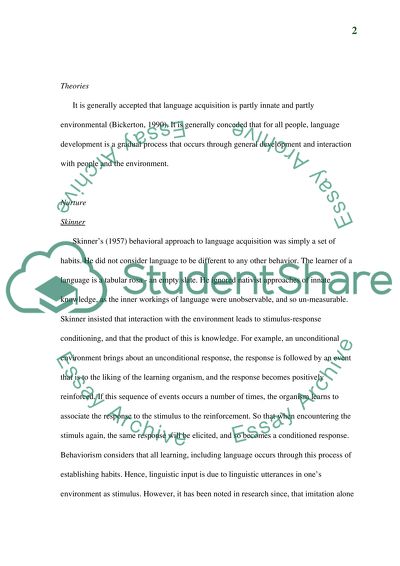Cite this document
(“The Theories Of Language Acquisition Essay Example | Topics and Well Written Essays - 2500 words”, n.d.)
The Theories Of Language Acquisition Essay Example | Topics and Well Written Essays - 2500 words. Retrieved from https://studentshare.org/education/1527967-language-development-essay
The Theories Of Language Acquisition Essay Example | Topics and Well Written Essays - 2500 words. Retrieved from https://studentshare.org/education/1527967-language-development-essay
(The Theories Of Language Acquisition Essay Example | Topics and Well Written Essays - 2500 Words)
The Theories Of Language Acquisition Essay Example | Topics and Well Written Essays - 2500 Words. https://studentshare.org/education/1527967-language-development-essay.
The Theories Of Language Acquisition Essay Example | Topics and Well Written Essays - 2500 Words. https://studentshare.org/education/1527967-language-development-essay.
“The Theories Of Language Acquisition Essay Example | Topics and Well Written Essays - 2500 Words”, n.d. https://studentshare.org/education/1527967-language-development-essay.


